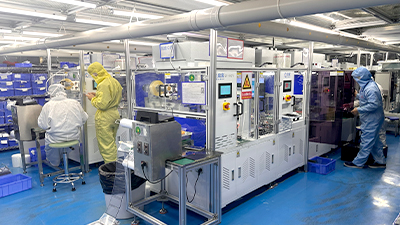
True Tone offers a service crafted by Apple to balance display shades under external light. Thus True Tone adapts devices to render consistent and realistic colors despite surrounding light. Many perceive reduced ocular strain through continuous True Tone activation, thanks to mitigating visual fatigue. This mechanism appears in tools like iPhones, iPads, and Macs and it can be configured to turn on or off depending on preference.
- Situations noticing True Tone effects cover sunlit reading, screen work in shadowy rooms, and evening movie watching.
Cutting-Edge Tools adjusting displays to environments
True Tone functions as a novel method personalizing screen tones according to location light. It incorporates detectors to measure surrounding brightness and adapts blue hues in real time for a more easy eye reception. This curtails ocular discomfort improving extended observation. True Tone technology is incorporated in diverse devices spanning phones, tablets, and screens.
Portable Display compared to Apple Device Screen: Essential Variations
Even though users often treat “cellphone screen” and “iPhone display” as synonymous, key differences exist between Android and iPhone screen types . Android displays deliver assorted options for display extent and image resolution, whereas iPhones are distinguished by supreme OLED visual modules. Differences also exist in screen technologies. Certain Android manufacturers employ AMOLED screens while Apple uses mainly LCD and OLED panels in their iPhones.
- Divergences are notable in color vibrancy and visual angle breadth
- Diverse Android editions include faster display animation speeds delivering smoothness
- Generally, iPhone screens are considered more luminous
Understanding True Tone Technology in iPhones
True Tone functions as a tool balancing iPhone screen warmth with environmental brightness. It provides softer visual experience adapted to ambient brightness. When True Tone is activated, sensors in the iPhone measure ambient light and modify the screen’s color temperature to be warmer in low light or cooler in bright conditions.
- Additionally, True Tone may improve viewing comfort and reduce eye strain
- To switch True Tone on or off, access Settings > Display & Brightness and toggle the True Tone option
Naturalistic Observation
True Tone ensures your device matches screen colors to surrounding luminosity. This creates a more faithful visual experience, mitigating ocular weariness leading to genuine content interaction.
- Perceive pigments with superior clarity and vibrancy
- Gain improved sharpness and focus in visuals
- Keep eye strain low during long device use
Is owning a True Tone panel beneficial?
In today's advanced technological landscape, electronic devices become increasingly powerful. One feature gaining popularity is True Tone technology which self-modifies screen color based on nearby light, enhancing the visual experience to be more natural and pleasant. But is having a True Tone display really relevant? The answer depends on how you use your device and your specific needs.
- For users working long hours in front of screens, True Tone can be highly beneficial by reducing eye strain and improving comfort
- Conversely, non-intensive users oriented to amusement may see minor distinctions
In conclusion, the significance of True Tone displays hinges on individual needs and choices. If you prioritize a more natural and comfortable viewing experience, this feature is worth considering when selecting your next device.
Strengths and Weaknesses of True Tone Systems
True Tone acts as a powerful advancement tuning screen temperature consistent with ambient illumination. This can enable smoother viewing particularly across long usage intervals. However, there are some drawbacks. Some users find True Tone may be too sensitive, causing unexpected changes in color temperature.
- It might affect color accuracy for specific tasks
- Occasionally, True Tone struggles with varied lighting types
Generally, True Tone acts as a valuable asset for regular screen observers. Nonetheless, it is important to remain aware of its constraints.
Examining Screens with Integrated True Tone
True Tone mechanisms have rapidly enhanced viewing digital imagery on devices. This leading-edge feature self-adapts the color temperature of your display to harmonize surrounding light. In turn, True Tone supplements a more authentic viewing experience, reducing eye strain and optimizing color clarity. When assessing screens with True Tone, consider factors such as pixel density to determine the best recommendation for your demands.
- Furthermore, True Tone can amplify image definition in certain situations.
- But, not all True Tone-equipped displays are the same.
Preferred iPhones with True Tone Displays
When prioritizing excellent display, pursue iPhones offering True Tone innovation. Such functionality maintains display balance by detecting and adapting lighting for user ease. Popular iPhone models with True Tone include 11 Pro, 12 Pro, 13. These variants offer a comprehensive array of features and specifications to para que sirve el true tone meet your needs.
- Cost-effective iPhones with True Tone present good value
- Moreover, True Tone displays contribute to eye care through fatigue mitigation
Calibrating True Tone on Your iPhone
Setting True Tone refines display coloration consistent with environment light levels. To do this, go to "Settings" > "Brightness Options" and turn on True Tone. In that same section, you can set True Tone levels according to your preferences.
- Keep in mind True Tone works optimally with natural light exposure
- Sample alternative configurations to perfect your sight comfort
True Tone Test: Does It Really Change Your Experience?
Advanced True Tone mechanisms claim improved and more accurate imagery. But does it really meet these goals? To check whether True Tone substantially affects the experience, we tested its function across a variety of devices and scenarios.
- The report shares findings useful for judging True Tone’s importance
Watch this report to determine True Tone’s real impact on your visual engagement!
